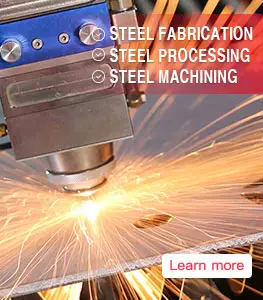Welcome to BBN Steel Materials Factory
What is S420N carbon low alloy steel
According to EN10025-3, S420N means that its performance can meet the requirements of users for steel plates in different environments under the condition that the temperature does not exceed +550°C and the ambient pressure is 50 KPa (equivalent to atmospheric pressure).
EN10025-3 S420N Carbon Steel plate standard:
A: Chassis parts for automobiles, tractors and other industrial vehicles (such as gearbox housings, gear transmission parts, connecting rod pins, etc.);
B: Used to make various hull structures, boiler parts and ship equipment components, etc.
Among them, the main standard is S420N in EN10025-3.
This standard specifies the chemical composition, mechanical properties and heat treatment process requirements of S420N steel plates in hot-rolled steel plates and cold-drawn plates.
1. Characteristics and scope of application
According to JB/T 7789-2012 "Steel Strip", S420N refers to the low-alloy steel produced by smelting, rolling, heat treatment and other processes with +C, +S, -P as the main alloying elements and carbon as the main engineering material. High-strength steel plate.
Among them, S420N carbon steel is mainly used in the manufacture of automotive drive shafts and frame components, such as gearbox housings, steering knuckles, drive shafts and drive axles. In addition, it can also be used to manufacture boilers and hull structures, such as boiler parts and hull parts.
According to GB/T 16552-2008 "Hot Rolled Steel Plate and Sheet Strip", the chemical composition of S420N can be summarized as follows: (1) Sulfur content: ≤0.15%; (2) Silicon content: ≤0.05%; (3) Manganese element: ≤1.0%; (4) Phosphorus content: ≤0.05%; (5) Nickel content: ≥0.20%; (6) Molybdenum element: ≤0.20%.
According to GB4405-2008 "Low-alloy high-strength steel hot-rolled steel plate and thick steel strip", the chemical composition of S420N can be summarized as follows:
2. Chemical composition (mass fraction, %)
The chemical composition of the S420N carbon and low-alloy steel plate, C:0.05%~0.08%, Mn:1.0%~1.5%, Ni:0.15%~0.20%, P, S:0.2%~0.3%.
The chemical composition of the steel plate, C/Mn=4.80~6.30; Mn≤2.20; A≤0.90 (C).
Steel plate chemical composition (mass fraction, %) carbon: ≤0.02%
Chemical composition of steel plate (mass fraction, %) P=1.10~2.20S=0.01%~0.04%C=0.12-0.05S=0.03%~0.14% Si=0.05-0.02S=0.003-0.01W>0.05.
B is not more than 0.05%; A is not more than 0.1%
3. Mechanical properties (tensile strength, yield strength, elongation, hardness)
A: In the temperature range of -550°C~+550°C, the yield strength of S420N steel plate is not less than 345 MPa, the elongation is not less than 12% (thickness is less than 10 mm), and it has good toughness and low temperature impact toughness.
B: In the temperature range of -550°C~+550°C, the yield strength of the steel plate is not higher than 340 MPa.
C: In the range of -540°C~+540°C, the elastic modulus, hardness, tensile strength and other performance indicators of the steel plate are greater than or equal to low carbon steel.
D: The deformation resistance of the steel plate within the range of -540℃~+540℃ is greater than or equal to 3250N/mm, and it has good low temperature impact toughness.
4. Heat treatment specifications and metallographic structure
Specifications for heat treatment: the hardenability of quenching and tempering shall meet the requirements in Table 4-1.
Metallographic structure:
(1) Pearlite structure: the matrix is ferrite, granular, with a small amount of pearlite and martensite.
(2) Bainite structure: the matrix is austenite, and there are a small amount of three phases of ferrite, martensite and retained austenite in the ferrite gap.
When quenching at a higher temperature, the carbon content in the steel will increase, and the increase in carbon content will reduce the stability and toughness of martensite, so it should be properly tempered after quenching.
(3) Amount of retained austenite: When the heat treatment temperature is lower than 750°C, the amount of ferrite formed during the cooling process is more than that in the steel; The amount of retained austenite formed during fire is less than that formed under normal heat treatment system; when the heat treatment temperature is higher than 750 °C, the degree of reduction of retained austenite is closely related to temperature.
5. Delivery status and main technical requirements
①Minimum thickness and maximum width of steel plate:
②Surface quality:
a. The surface of the steel plate should be smooth and clean, without defects such as scratches, cracks, slag inclusions, and decarburization;
b. No stratification or segregation.
③ Allowable deviation of plate thickness:
a. The allowable thickness deviation of the steel plate shall not exceed ±1.5% of the design thickness.
b. The edge of the board should be flat and no obvious layering is allowed;
c. The dimensional accuracy of the steel plate shall comply with the dimensional accuracy grade A and below standards stipulated in GB/T997.1.
6. Suitable for making various types of tools, such as drill bits;
work at higher temperatures;
Suitable for manufacturing large parts, such as bearings, gears, transmission shafts, etc.
The strength grade is A9, and various needs can be met by changing the chemical composition or heat treatment.
The main purpose of steel plate:
Used in the manufacture of engine and gearbox housings, gear transmission parts and bearings, shafts.
Main chemical composition of steel plate: the main chemical composition of steel is carbon, silicon, manganese, phosphorus, sulfur, etc.
Steel plate grades include A and B series.
7. S420N Steel Application examples:
S420N has high toughness under impact load at low temperature and can withstand high impact load at -30°C.
Mainly used in the manufacture of auto parts: gearbox housings, connecting rod pins, flywheel housings, drive axles, etc.
Mainly used in shipbuilding: hull parts and marine components (such as boiler parts, chimney parts);
It is mainly used to make the inner shell of automobile bumper, the inner frame of automobile hub cover, etc.
It is mainly used in the manufacture of pressure vessel inner pressure chambers (safety valves) and safety valves in petrochemical equipment;
It is mainly used to make large structural parts in shipbuilding and marine engineering, such as deck mechanical parts, hull structures and boiler system parts.
.webp)
.webp)
.webp)
.webp)
.webp)
.webp)
.webp)
.webp)
.webp)



Leave a Message